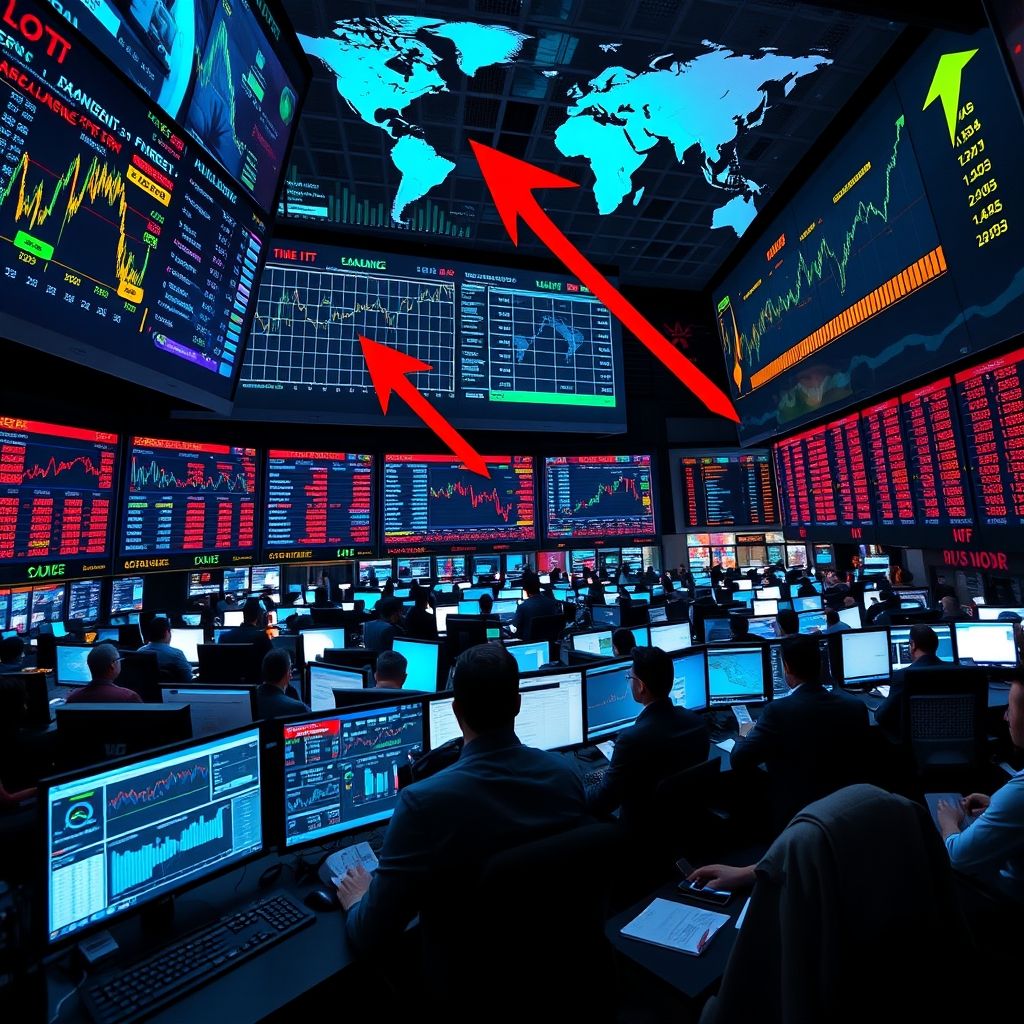How do trade balances influence futures prices?
How Trade Balances Shape Futures Prices: What Traders Need to Know
Imagine stepping into a bustling trading floor or scrolling through your favorite financial dashboard — prices are moving, markets buzzing, everyone’s chasing the next big move. Ever wondered what really drives those futures prices up or down? One key factor often overlooked is trade balances. In a time when financial markets are more interconnected than ever, understanding how trade deficits or surpluses influence futures can be a game-changer for traders and investors alike.

Unlocking the Link: Trade Balances and Futures Markets
Trade balances — the difference between what a country exports and imports — aren’t just about international politics or economics; they ripple through every financialasset class, from forex and stocks to commodities and crypto. If a country is running a big trade deficit, it might mean more foreign investment flowing out, which can put downward pressure on the local currency. That, in turn, influences futures prices for currencies, commodities, and even indices linked to global economic health.
For instance, take the U.S. dollar: if the U.S. posts a substantial trade deficit, the dollar might weaken. Futures contracts tied to the dollar will then reflect this shift, impacting not just forex traders but commodities priced in dollars like oil or gold. Conversely, a surplus might strengthen the currency, making futures for related assets more expensive initially, before market forces adjust.
How Trade Deficits and Surpluses Drive Price Dynamics
-
Currency Depreciation & Appreciation: When trade deficits widen, the local currency often weakens due to increased supply in foreign markets. Futures tied directly to currency rates will then reflect these changes, influencing everything from forex to international stocks.
-
Commodity Prices: Countries that run trade deficits importing a lot of commodities (like energy or metals) can see futures prices react as supply-demand dynamics shift. A rising trade deficit might signal increased demand for foreign goods, pushing futures for commodities higher.
-
Stock & Index Futures: Trade balances influence investor sentiment globally. Large deficits may signal economic weakness, prompting declines in stock futures. Conversely, surpluses can boost investor confidence, lifting futures prices.
-
Crypto and Emerging Assets: As traditional currencies fluctuate based on trade surpluses or deficits, crypto markets often become a hedge. Decentralized finance (DeFi) and AI-driven trading platforms are now exploring how macroeconomic trade flows impact these emerging assets, adding new layers of complexity and opportunity.
Navigating the Shifting Landscape with Smart Strategies
In this interconnected environment, savvy traders are tapping into advanced tools — from AI analytics to real-time charting — to decipher trade balance trends and anticipate futures moves. Leverage ratios, diversification across asset classes, and risk management strategies help navigate volatile waters. For example, when approaching a potential trade involving currencies or commodities, staying alert to trade deficit reports can provide an edge.
The rise of decentralized finance (DeFi) offers promising avenues, yet it’s not without challenges. Security, regulatory uncertainty, and liquidity concerns are real hurdles. That’s where integrating smart contracts and AI-driven decision-making can help automate and improve trading accuracy, making the pursuit of profit safer, faster, and more transparent.
The Future: Weaving DeFi, AI, and Trade Dynamics
Looking ahead, the development of smart contract trading and AI algorithms will fuel deeper insights into how macroeconomic indicators like trade balances influence markets. Imagine fully automated systems that adjust your positions based on live trade data, geopolitical developments, and technical analysis — all while ensuring transparency and security through blockchain.
Decentralized financial systems are gradually breaking down traditional barriers, promising a more democratized, resilient, and innovative trading environment. Yet, they also face obstacles such as regulatory frameworks and technological hurdles. The key is to stay adaptable and informed.
Are trade flows the silent engine behind futures prices? Absolutely. Knowing how to interpret and utilize these signals could make all the difference in your trading game. In this rapidly evolving landscape, staying ahead with cutting-edge tech and strategic thinking is the secret sauce to turn macroeconomic insights into profitable moves.
Trade smarter, trade future-forward — because understanding trade balances isn’t just economics, it’s your edge in the new financial world.